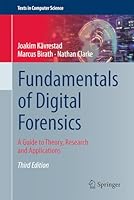
Wireshark Network Analysis, 2nd Edition
- Length: 986 pages
- Edition: 2
- Language: English
- Publisher: Laura Chappell University
- Publication Date: 2012-03-01
- ISBN-10: 1893939944
- ISBN-13: 9781893939943
- Sales Rank: #385241 (See Top 100 Books)
Wireshark is the world’s most popular network analyzer tool with over 500,000 downloads per month. This book provides insider tips and tricks to spot performance issues fast – no more finger pointing because the packets never lie! From “Death by Database” to “Troubleshooting Time Syncing,” 49 case studies offer insight into performance and security situations solved with Wireshark.
Learn to customize Wireshark for faster and more accurate analysis of your network traffic. Build graphs to identify and expose issues such as packet loss, receiver congestion, slow server response, network queuing and more.
This book is the Official Study Guide for the Wireshark Certified Network Analyst program.
This Second Edition includes an introduction to IPv6, ICMPv6 and DHCPv6 analysis, updated Wireshark functionality and new trace files.
Table of Contents
Chapter 1: The World of Network Analysis
Chapter 2: Introduction to Wireshark
Chapter 3: Capture Traffic
Chapter 4: Create and Apply Capture Filters
Chapter 5: Define Global and Personal Preferences
Chapter 6: Colorize Traffic
Chapter 7: Define Time Values and Interpret Summaries
Chapter 8: Interpret Basic Trace File Statistics
Chapter 9: Create and Apply Display Filters
Chapter 10: Follow Streams and Reassemble Data
Chapter 11: Customize Wireshark Profiles
Chapter 12: Annotate, Save, Export and Print Packets
Chapter 13: Use Wireshark’s Expert System
Chapter 14: TCP/IP Analysis Overview
Chapter 15: Analyze Domain Name System (DNS) Traffic
Chapter 16: Analyze Address Resolution Protocol (ARP) Traffic
Chapter 17: Analyze Internet Protocol (IPv4/IPv6) Traffic
Chapter 18: Analyze Internet Control Message Protocol (ICMPv4/ICMPV6) Traffic
Chapter 19: Analyze User Datagram Protocol (UDP) Traffic
Chapter 20: Analyze Transmission Control Protocol (TCP) Traffic
Chapter 21: Graph IO Rates and TCP Trends
Chapter 22: Analyze Dynamic Host Configuration Protocol (DHCPv4/DHCPv6) Traffic
Chapter 23: Analyze Hypertext Transfer Protocol (HTTP) Traffic
Chapter 24: Analyze File Transfer Protocol (FTP) Traffic
Chapter 25: Analyze Email Traffic
Chapter 26: Introduction to 802.11 (WLAN) Analysis
Chapter 27: Introduction to Voice over IP (VoIP) Analysis
Chapter 28: Baseline “Normal” Traffic Patterns
Chapter 29: Find the Top Causes of Performance Problems
Chapter 30: Network Forensics Overview
Chapter 31: Detect Network Scanning and Discovery Processes
Chapter 32: Analyze Suspect Traffic
Chapter 33: Effective Use of Command Line Tools
Appendix A: Resources on the Book Website

Fundamentals of Digital Forensics: A Guide to Theory, Research and Applications, 3rd Edition






